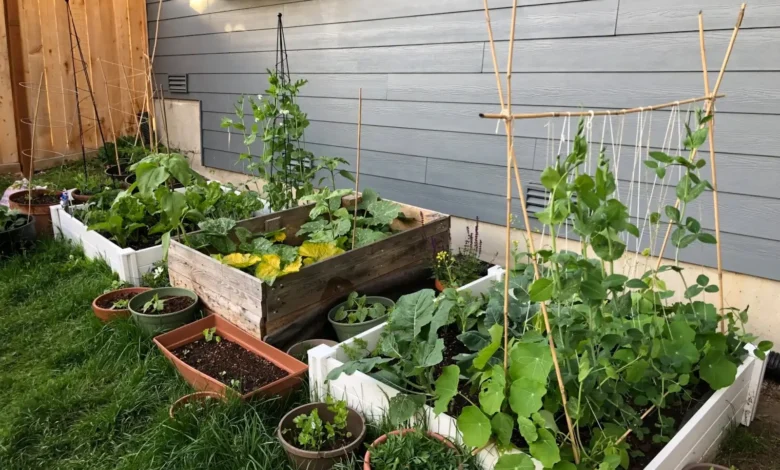10 Budget-Friendly Tips to Save Sheckles in Grow a Garden

In Grow a Garden, Sheckles are your core currency—and whether you’re just starting out or already have a few trees growing, you’ll quickly realize how easy it is to spend them faster than you earn. From unlocking new pets and expanding your plot to upgrading tools or purchasing cosmetic items, nearly everything requires Sheckles. And while the game offers plenty of fun ways to earn them, it’s just as important to manage your spending carefully—especially as a beginner.
When I first started playing, I made the common mistake of buying too many things too quickly—extra pets, decorations, even unnecessary tools—without realizing how fast my savings were vanishing. Over time, I learned how to make smarter decisions that not only helped me stretch my Sheckles further but also made my garden more productive and enjoyable.
This guide shares 10 budget-friendly tips that helped me stop wasting Grow a Garden Sheckles and start spending them where it truly counts. If you’re looking to play smarter and grow your garden without going broke, these tips are for you.
1. Prioritize Daily Quests
Daily quests are by far one of the most consistent and beginner-friendly ways to earn Sheckles in Grow a Garden. Each day, the game offers a set of small objectives—things like harvesting a certain number of fruits, selling specific items, or feeding pets a set number of times. These tasks are typically aligned with your regular gameplay, which means you’re getting rewarded for things you’d do anyway.
The key here is efficiency. Log in early so you have enough time to complete all quests before the daily reset. Keep an eye on which quests offer Sheckles or high-yield rewards, and try to complete those first. If you finish all the tasks in a day, you’ll often get a bonus reward like a chest or a temporary boost, which can further improve your earnings. Over time, daily quests become a reliable foundation for building up your Sheckle savings without grinding endlessly.
2. Avoid Overbuying Pets
Pets are adorable and functional, but they’re also one of the biggest sources of early-game Sheckle drain. It’s tempting to collect every cute creature you come across, but not all pets offer practical benefits—especially early in the game when your resources are limited.
Instead of collecting pets just for fun, focus on unlocking those that provide significant utility. For example, the Raccoon increases your fruit collection speed, and the Stegosaurus gives you a chance to duplicate harvested fruits—both are excellent for boosting Sheckle income. Try to research or test what each pet does before purchasing. Also, don’t forget that managing too many pets can lead to overcrowding or inefficiency in your garden. Fewer, high-impact pets are better than a dozen idle ones draining your attention and space.
Choosing the right pets can make a massive difference in your farming success and Sheckle savings. While it’s tempting to collect every animal you see, focusing on high-impact companions is the smarter move—especially when starting out. If you’re looking to speed up progress without overspending, take the time to research pet abilities and build a team that supports your farming strategy. And if you’re ready to expand your collection wisely, make sure to buy Grow A Garden pets that offer practical, game-enhancing benefits rather than just cute appearances. A smart investment now can save you hundreds of Sheckles later.
3. Optimize Your Farm Layout
A cluttered, unorganized garden can indirectly cost you Sheckles through inefficiencies. Pets get stuck, fruits go uncollected, and valuable items might despawn if your layout isn’t working smoothly. One of the best cost-saving habits you can develop early on is to create a clean, organized layout that maximizes both space and pet efficiency.
Place your fruit trees in clusters but leave enough room for pets to move freely. Use walkways, conveyors, or auto-baskets to guide fruit into easily accessible zones. Avoid putting decorations near working areas—they may look nice, but they can interfere with pet paths. The more efficiently your garden runs, the faster your resources get collected and sold, helping you earn more Sheckles without needing to spend on unnecessary upgrades or corrections later.
4. Use Boosters Wisely
Boosters in Grow a Garden can be incredibly powerful—but they can also become a Sheckle sink if used carelessly. Many new players make the mistake of using boosters on every crop or task, thinking it will speed up progress. While that’s true, it’s not always worth the cost, especially early on when every Sheckle counts.
Instead, save your boosters for moments that truly matter—like when you’re trying to complete a time-limited quest, maximize a harvest from high-value plants, or duplicate rare fruits. For example, using a growth-speed booster on a prehistoric plant that produces high-Sheckle fruits makes much more sense than applying it to a basic starter crop. Think of boosters as strategic tools, not shortcuts. With careful use, you can gain more value from each booster than you paid for it.
5. Sell Excess Items
If your storage is full of unused seeds, surplus fruit, or duplicate decorations, you’re sitting on a pile of potential Sheckles. One of the easiest ways to improve your economy is to regularly sell off items you don’t need. It’s tempting to hoard in case something becomes useful later, but clutter only slows you down—and a clean inventory helps you focus on growth.
Start by identifying fruits or materials that are overstocked and not part of your current farming plan. Check the value of items in the shop or trading post—some fruits or mutations fetch a high price, especially during events or demand cycles. Even basic fruits can add up when sold in bulk. Clearing out your inventory not only gives you Sheckles, but it also frees up space for more valuable resources, keeping your garden efficient and profitable.
6. Focus on Fruit Duplication
Fruit duplication is one of the most efficient passive methods to multiply your earnings in Grow a Garden. Certain pets—especially the Stegosaurus—have the ability to duplicate fruits upon harvest. This means you can get two or more fruits from a single tree cycle, effectively doubling your output without any extra effort or cost.
To maximize this, prioritize planting high-value trees and keep duplication pets close to your harvest zones. If you have multiple duplicators, arrange your layout so their areas of effect overlap with your most profitable crops. The duplicated fruits can be sold for extra Sheckles, used for quests, or traded for Dino Eggs and other rare items. Over time, this method becomes one of the most cost-effective ways to passively boost your economy and save more Sheckles without grinding.
Mastering fruit duplication isn’t just a clever trick—it’s a long-term strategy that can completely change how efficiently your garden operates. When used correctly, it allows you to scale up your income with minimal effort, especially when paired with the right pets and planting layout. Whether you’re just starting out or managing one of the top-tier Grow a Garden Accounts, building around duplication mechanics is a smart and sustainable way to grow your resources faster than ever.
7. Participate in Special Events
Special events in Grow a Garden are a hidden gem when it comes to saving (and earning) Sheckles. These limited-time events often feature unique challenges, community goals, or themed quests that reward you with Sheckles, rare items, or exclusive pets. The best part? Most of these rewards come from simply participating, not spending.
Keep an eye on the event board or news section in the game. When an event starts, take a look at the tasks and identify which ones align with your current farming setup. Many events encourage actions you already do—like harvesting fruit, feeding pets, or planting specific trees—but with better rewards. Timing your usual gameplay around these event objectives can earn you a significant amount of Sheckles without changing your playstyle. Just remember: events are time-sensitive, so act quickly when they launch.
8. Automate Where Possible
Automation might sound like an advanced strategy, but even beginner gardens can benefit from a few well-placed automation tools like conveyors, auto-baskets, and collectors. While the upfront cost may seem high, automation is a long-term investment that pays off by saving time, reducing waste, and allowing your pets to function more efficiently.
For example, conveyors can move harvested fruits away from crowded zones and into storage or selling areas without you having to manually collect them. Auto-baskets can handle basic item collection while you focus on managing higher-level tasks. With automation, you’re not just reducing your workload—you’re ensuring that fewer fruits go uncollected, fewer pets get stuck, and your productivity stays consistent even when you’re multitasking.
9. Maximize Pet Abilities
Not all pets are created equal, and understanding what each one does can dramatically impact your Sheckle earnings. Some pets are designed for speed (like the Raccoon), others for crop growth (Triceratops), duplication (Stegosaurus), or even rare mutations (Raptor). By assigning the right pets to the right areas of your farm, you can get far more value without spending anything extra.
A smart strategy is to rotate your pets based on your current goals. If you’re farming to sell, keep duplication and speed pets active. If you’re working on a quest requiring mutated fruits or rare materials, swap in pets that influence those factors. Also, check cooldowns—some abilities work in intervals, and knowing when to trigger them helps you optimize results. The more efficiently you use your pets, the more Sheckles you’ll generate passively.
10. Clear Your Garden Regularly
A clean, well-maintained garden isn’t just for looks—it’s essential for saving Sheckles. Over time, it’s easy to let decorations, unused items, or leftover fruit clutter up your space. This can slow down your game, confuse your pets, or block key farming areas—all of which reduce your efficiency and cost you money in the long run.
Make it a habit to regularly review your garden layout. Remove decorative items from high-traffic areas, reposition harvest zones to reduce overlap, and clear out expired or unused materials. If your pets seem idle or stuck, it’s usually a sign that your layout needs adjusting. Think of your garden like a workspace—when it’s organized and optimized, everything runs more smoothly, and you avoid wasting valuable time and Sheckles on inefficiency.




